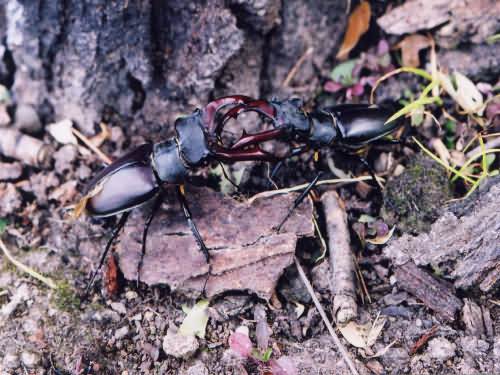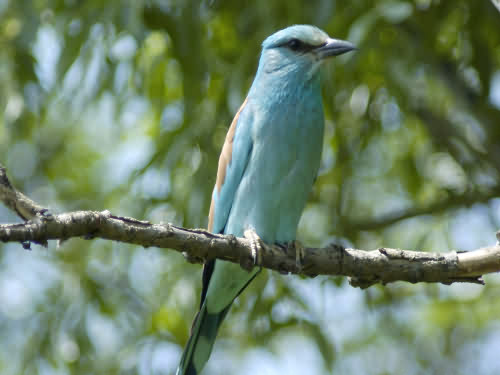Fauna
The fauna of Nagykőrös steppe oak woods is really diverse, since species of both woodlands and grasslands can find their habitat here.
 The fauna of the oak woods, especially their insect fauna is visibly richer than that of the surrounding plantations of alien trees. Some typical representatives of animals are listed here, emphasizing the fact that for the long term viability of a whole association many other species contribute, which are not listed here. The fauna of the oak woods, especially their insect fauna is visibly richer than that of the surrounding plantations of alien trees. Some typical representatives of animals are listed here, emphasizing the fact that for the long term viability of a whole association many other species contribute, which are not listed here.
The mammals found in the steppe oak woods are not typical species. We have to mention though the Fallow Deer (Dama dama), which was introduced for hunting purposes and due to its high numbers severely threatens the natural recovery of the woods.
The oak woods are home to numerous bird species. From the woodpeckers which play an important role for the health of the woods Middle Spotted Woodpecker (Dendrocopos medius) and Syrian Woodpecker (Dendrocopos syriacus) occur while Barred Warbler (Sylvia nisoria) and Lesser Grey Shrike (Lanius minor) also breed. Black Stork (Ciconia nigra), Honey Buzzard (Pernis apivorus) and the colourful Roller (Coracias garrulus) can also be observed here.
Important butterflies of oak forests living on the oak trees are: Spatalia argentea, Dryomonia dodonea, Great Oak Beauty (Boarmia roboraria), Lunar Double-stripe (Minucia lunaris), The Alchymist (Catephia alchymista) and Green Oak Tortrix (Tortrix viridana). Scarce Swallowtail (Iphiclides podalirius) and Giant Peacock Moth (Saturnia pyri) live on the bushes of the forest edge.
The older steppe oak woods provide an important habitat for beetles living in drying and dry-rotten trees such as the Stag Beetle (Lucanus cervus), a species of community importance and the Great Capricorn Beetle (Cerambyx cerdo), or the Rhinoceros Beetle (Oryctes nasicornis) and Big Rose-chafer (Potosia aeruginosa). The European Carpenter Bee (Xylocopa violacea) often nests in drying tree trunks. The Steppe Oak Woods also provide habitat for Bolbelasmus unicornis, which is a species of community importance of the area.
Gall midges (Cecidomiidae) and gall wasps (Cynipidae), which cause characteristic galls, occur in large numbers in sand oak woods, one of them is the Andriscus hungaricus. The occurrence of 3 rare gall wasps Andriscus legitimus, A. mayri, A. nudus in the same area is quite unusual.
|